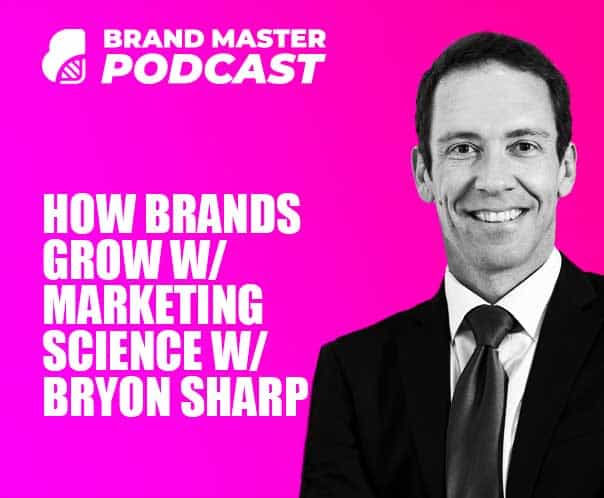When it comes to branding, knowing how to analyze your target audience is one of the first skills you need to master.
After all, no matter what the business you’re branding does, without an audience, it’s irrelevant.
The goal of branding is to shape perceptions.
Those perceptions are in the mind and those minds belong to your audience.
So, let’s dive in and identify the minds that we want to shape.
How To Identify Target Market

Every brand solves the problem of a want or a need.
Whether you’re selling a soft drink or providing legal advice, the consumer of both of these solutions have something in common.
They have a desire to experience an outcome whether that outcome is refreshment or peace of mind.
When you begin to identify your target market, you need to first ask the question
“What group of people have the greatest desire to acquire the outcome that our solution provides?”
This question is the starting point, which aims to narrow your audience from “everybody” to a specific group of people that represent your target audience.
Using a series of tools, your goal is to narrow and refine until you have a clear picture of who your audience is.

This picture is formed as a detailed outline of a fictional person (or audience persona) who represents that group of people who have the greatest desire to acquire the outcome of your solution.
With an audience persona crafted in the right way, you can develop a communication strategy to resonate with their challenges and pain points.
In order to uncover this fictional person, you need to know how to analyse your target audience.
So let’s dive in.
Step #1
Define Target Market Demographics

Begin by categorizing your audience based on their circumstances with demographics.
Demographics are the first, most basic tool you use when defining your target audience.
The more you know about your audiences’ circumstances, the more effectively you can target them or communicate with them through your marketing efforts.
Your demographics include (but certainly aren’t limited to)
Age
Race
Gender
Income
Occupation
Marital Status
Religion
Education
Location

Although many of these characteristics will have little relevance, they all work together to paint a detailed picture, which becomes very influential when developing a communication strategy.
If you don’t have any of this information readily available, social media provides a treasure trove of information you can hack.
The engagement on your competitors social pages will provide you with the profiles of the exact people you’re targeting where you can find as much demographic information as you need.
Step #2
Uncover Target Market Psychographics

Psychographic analysis is a little more challenging as the information you base your analysis on is quite subjective when compared to the stat based demographics.
By analyzing your audiences’ psychographics you get a window into their personality including their behaviours, attitudes, opinions and preferences.
This is where you really start to get a feel for the “who” behind your audience as these are the behavioural human characteristics that shape us all as individuals.
After identifying audience profiles through demographics, you can then dive into their likes, preferences and behaviours by analyzing preferences such as:
Sports
Activities
Interest
Hobbies
Music
Movies
News
Political views
Food
Restaurants
Entertainment
Explore Brand Strategy
Programs & Tools
Step #3
Develop Your Audience Persona

Using the information you gather from your analysis on demographics and psychographics, you want to begin building your audience persona.
You may find that your broader target audience can be further segmented into specific groups and you may want to create an audience persona for each of these segments.
You can compile your information in a simple spread sheet or grab any one of the freebie “buyer Personas” or “Customer Avatars” online to begin compiling and developing your audience persona(s).
Step #4
Map The Customer Journey

Once you have your detailed audience persona, you then need to uncover the lives they lead and the journey they’re on until they reach that heightened point of desire for the outcome.
Though this group of people will be on their own individual journeys, these journeys will have many commonalities and all roads will lead to the same epiphany, which is the realization of that desire for the outcome.
This realization is the point of the journey the brand must be most aware of because it’s where they can resonate in the most effective way… through human emotion.

From here the journey has a fork in the road.
One direction leads to a desirable outcome, the other leads to an undesirable outcome.
Forums and social groups are a great place to find the questions your audience have in and around the outcome you provide.
There may be hundreds of smaller challenges that contribute to increasing the desire for your offered outcome. By understanding these progressive steps, you can map out their journey and meet them on the road to guide them in safely to your solution.
Step #5
Identify The Challenges and Pain-Points

The journey that leads your audience to your solution is fraught with challenges.
These challenges are critical because they increase the emotional tension and the desire for an outcome and often overcoming these challenges bring them closer to the outcome they desire most, (that your brand can provide).
By identifying each and every one of the challenges your audience faces and the related pain-point, you arm yourself with the tools you need to help them.
Whether through a piece of content, a how to video or a little bit of inspiration, you can help them along the way and become part of their journey long before you put your offer in front of them.
Again, forums, groups and anywhere you audience asks questions around this topic will be your go-to for identifying these challenges.
Step #6
Uncover Audience Emotions With Reviews

Your customers will have two very distinct states in relation to the outcome they want to achieve.
In order to get to that outcome, they will go through an experience and the end result will be an outcome they’re happy with or an outcome they’re unhappy with.
These two states are known as the before and the after state.
By identifying the emotional connection they have before the solution, you can uncover very powerful emotional insights into their fears and desires.
Their desires represent the outcome they most want while their fears represent the outcome they want to avoid.

Uncovering this information is critical because it’s from these emotional connections, these fears and desires, that you can build a communication strategy that will resonate.
Review sites are a window into these emotions. Positive reviews represent the desired outcome and negative reviews represent the feared outcome.
Knowing how to analyse your target audience through review sites is so powerful because these reviews are often highly charged with emotion and lay bare the fears and the desires you can gather.
How To Use Target Market Segmentation

Different people experience problems in different ways.
Once you analyse you audience and define who they are, you might find that this group could be further categorized based on their journeys, emotional involvement, level of desire or consequences among other things.
Each of these groups are possible segments you can target more specifically.
By developing an audience persona for each on of these market segments, you can develop more specified communication strategies to resonate with them on a deeper level.
Connecting with your audience is about specificity.
If you can make them feel that you are speaking directly to them and their exact situation, as opposed to them as part of a broad group, you’re far more likely to resonate with them.
Conclusion
Knowing how to analyse your audience is a highly critical skill that every brand builder must develop.
As you enhance your processes and techniques, you begin to uncover more effective insights you can use in your brand development processes.
Are you building a brand now for yourself or a client?
Do you have a go-to technique you love to use for identifying your audience or do you have any challenges in finding your audience?
I’d love to know… drop a comment below and let me know!
On-Demand Digital Program
Brand Master Secrets
Make the transition from hired-gun to highly valued brand strategist in less than 30 days. The systems, frameworks and tools inside this comprehensive program are all you need to level up.









Hey just wanted to give you a quick heads up. The text in your article seem to be running off the screen in Opera. I’m not sure if this is a formatting issue or something to do with internet browser compatibility but I thought I’d post to let you know. The design and style look great though! Hope you get the problem fixed soon. Thanks|
Thanks for the feedback though we’ve run a test in Opera and all seems well… are you using desktop / mobile / Windows / IOS ?